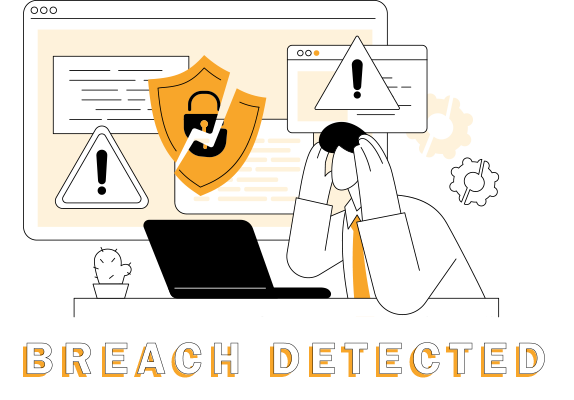If you suspect a breach, act immediately! Contact us now for urgent support.
A comprehensive cybersecurity breach response encompasses a set of processes and actions that organizations implement when they detect a cybersecurity incident. This response is critical not only for mitigating the immediate damages caused by the breach but also for preventing future occurrences and understanding the nature of the attack. Key components of an effective breach response include digital and cyber forensics, which play crucial roles in the investigation and recovery phases.
Digital and Cyber Forensics
Digital Forensics involves the identification, preservation, examination, and analysis of digital evidence. This process starts from the moment a breach is detected. Experts in digital forensics use specialized tools and techniques to collect data from various digital sources such as computers, servers, and network devices. The goal is to create a chronological timeline of how the breach occurred by tracing the attackers’ steps, identifying the entry point, and understanding what data was affected or stolen.
Cyber Forensics is a subset of digital forensics focused specifically on the internet and network-related aspects of a breach. Cyber forensics specialists delve into network logs, IP traces, and server records to detect anomalies and patterns that might indicate malicious activities. They analyze how the security breach was executed from a network perspective, which is critical for preventing future incidents of a similar nature.
Key Steps in Cybersecurity Breach Response
![]() Detection and Notification: The initial detection of a breach is followed by immediate notification to relevant stakeholders, including the cybersecurity team, affected business units, and, if necessary, external stakeholders such as law enforcement.
Detection and Notification: The initial detection of a breach is followed by immediate notification to relevant stakeholders, including the cybersecurity team, affected business units, and, if necessary, external stakeholders such as law enforcement.
![]() Containment: Short-term and long-term containment strategies are crucial. Initially, the focus is on isolating affected systems to prevent further damage. Long-term containment involves strategic changes to network access and security protocols to fortify defenses.
Containment: Short-term and long-term containment strategies are crucial. Initially, the focus is on isolating affected systems to prevent further damage. Long-term containment involves strategic changes to network access and security protocols to fortify defenses.
![]() Eradication: Once containment is assured, the next step is the removal of threats from the environment, which includes the deletion of malware, disabling breached user accounts, and fixing vulnerabilities.
Eradication: Once containment is assured, the next step is the removal of threats from the environment, which includes the deletion of malware, disabling breached user accounts, and fixing vulnerabilities.
![]() Recovery: This stage involves restoring systems to their original functioning state and tightening security measures. It includes patching systems, changing passwords, and enhancing security settings to secure the infrastructure.
Recovery: This stage involves restoring systems to their original functioning state and tightening security measures. It includes patching systems, changing passwords, and enhancing security settings to secure the infrastructure.
![]() Post-Incident Analysis: This is where digital and cyber forensics provide significant value. Analyzing what occurred and how the response was handled is essential for learning and improvement. This analysis helps in understanding the motives, methods, and paths of the attackers and is crucial for refining threat detection and response strategies.
Post-Incident Analysis: This is where digital and cyber forensics provide significant value. Analyzing what occurred and how the response was handled is essential for learning and improvement. This analysis helps in understanding the motives, methods, and paths of the attackers and is crucial for refining threat detection and response strategies.
![]() Follow-Up: Reporting the breach to relevant authorities and stakeholders is a regulatory requirement in many jurisdictions. Follow-up actions also include conducting “lessons learned” meetings, updating policies, and providing additional training to prevent similar incidents.
Follow-Up: Reporting the breach to relevant authorities and stakeholders is a regulatory requirement in many jurisdictions. Follow-up actions also include conducting “lessons learned” meetings, updating policies, and providing additional training to prevent similar incidents.
Importance of Cybersecurity Breach Response
A well-orchestrated cybersecurity breach response can significantly minimize the financial, legal, and reputational impacts of a breach. By incorporating digital and cyber forensics, organizations gain a deeper understanding of the breach dynamics, which is crucial for legal proceedings, regulatory compliance, and improved cybersecurity posture. Effective breach response not only restores operations and confidence but also strengthens the organization’s resilience against future cyber threats.

